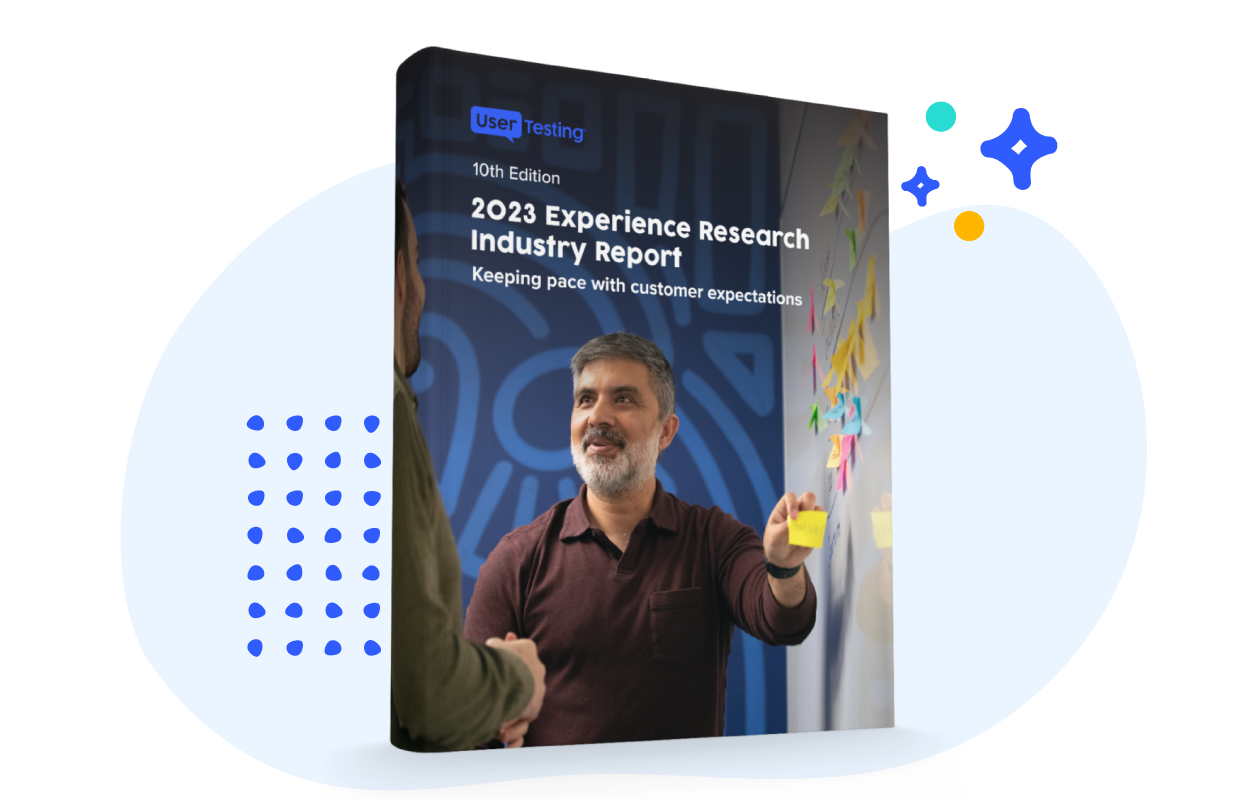
5 marketing terms your marketing teams want you to know

No matter your role, if you’re focused on creating great customer experiences, chances are you’re working with multiple teams across your organization. Each team has a unique role to play in creating great CX, and likely use phrases, acronyms, and terms that not everyone will know or understand. To help with the translations, we reached out to our friends on social media and our internal experts at UserTesting to find out what key terms these teams want their colleagues to know:
In the third installment of our series, we talked to marketing teams to learn how their colleagues can better communicate and interact with them. Use this guide to get aligned with the teams you work with—and get everyone speaking the most important language of all; the customers’.
Top five terms and concepts your marketing colleagues want you to know
TOFU/MOFU/BOFU
While these acronyms may sound like food, they’re the furthest thing from it. One of the key deliverables for marketing teams is creating content and campaigns that move people through a journey from learning about something to being ready to consider purchasing it. This is known as the marketing funnel. TOFU stands for “top of the funnel,” which is the first stage of the buying journey where people are first discovering that they have a problem they need to solve. This is a great stage to provide your prospects with evergreen educational content, keeping things high-level and helpful. MOFU stands for “middle of the funnel,” which is the stage where your prospect is looking into if what you have to offer could potentially solve their problem. This stage benefits from case studies so they can visualize how your product has solved other companies issues, as well as, more detailed information on product offerings. BOFU stands for “bottom of the funnel,” which is the stage where potential customers are close to making a purchase decision. Ideally, this leads to a demonstration and serious conversations with the sales team about purchasing your product.
Inbound and outbound marketing
The difference between inbound and outbound marketing is all in the approach. When it comes to inbound marketing, you’re bringing potential prospects into the funnel through engaging and relevant content. Remember that time you were looking for information on something and found an eBook that answered your question? That’s inbound marketing. Outbound marketing is closer to what many people consider “traditional marketing” these days. It involves telling people about your company through methods like advertising, direct mail, and email blasts, just to name a few. Outbound marketing usually costs more money than inbound and tends to target a bit broader audience. With inbound marketing, the people coming into the funnel through these efforts are more likely to be contacts that are more inclined to purchase.
Campaign
Marketing campaigns; you probably hear people talk about them a lot but what are they? A campaign is a strategic plan to promote some aspect of your business. Campaigns can vary from promoting a product feature, a piece of content or brand awareness, just to name a few. Campaigns usually consist of a variety of tactics which can include strategies like emails, social media, and press coverage. What’s crucial to any marketing campaign is making sure that you’re working toward a particular goal. Without having a defined goal, the campaign can become cumbersome, quickly losing direction and ultimately losing its impact.
NPS (Net Promoter Score)
Net Promoter Score, or NPS, is a common CX metric companies use to gauge customer loyalty. The metric came about after decades of focus and research by consulting, marketing, and management firms, all determined to uncover the formula to customer loyalty. After years of research, a few books, and a lot of customer interaction, Fred Reichheld, Bain & Company, and Satmetrix zeroed in on the “One Number You Need to Grow” and published their findings in the Harvard Business Review, and the NPS was born. The calculation aims to measure customer sentiment—and thus, loyalty—by asking just one simple question: How likely is it that you would recommend our company/product/service to a friend or colleague?
SEO (Search Engine Optimization)
SEO is the act of improving where a website appears on search pages. By tweaking certain elements of a webpage’s different SEO components you can improve how it ranks within organic search page results. (Translation: make sure that your page or content ranks high in a Google search).






